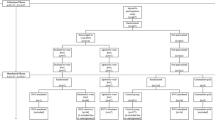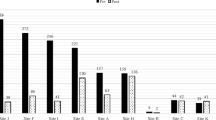Abstract
Body-worn cameras (BWCs) continue to be adopted by law enforcement agencies around the world, yet how camera monitoring affects performance dimensions of policing in “critical incident” situations has received scant attention. We contribute to filling this gap. Guided by distraction-conflict theory from psychology, we conducted a laboratory experiment and used electrophysiological methods (EEG and ECG) to explore whether officer performance during simulated critical incidents is impaired by camera-induced attentional conflict. Results from a convenience sample of police officers from a medium-sized, Midwestern police department in the USA reveal that camera monitoring had complex, often deleterious, effects on cognitive load, stress arousal, and performance. The current investigation supports a small but growing body of research revealing that BWCs, like any new technology, not only have intended positive consequences, but also potential unintended negative ones that need to be considered from a safety standpoint. A more thorough discussion of policing in the age of BWCs and other forms of camera surveillance is overdue.








Similar content being viewed by others
Notes
In the USA, confidence in the police fell to a historic low in 2020, with only 48% of Americans reporting that they have a “great deal” or “quite a bit” of confidence in the police (Brenan, 2020).
The dataset generated from the current study is not publicly available due to a privacy agreement with the cooperating police department from which participants were recruited.
We had originally planned to include a “diverse group of private citizens” on the supposed panel as well; however, we decided not to do so due to concerns about how it would impact our ability to recruit officers to take part in the study. As such, our study may be viewed as a more conservative test of the impact of attentional conflict from camera monitoring on the hypothesized outcomes. We return to this issue in the “Discussion” section.
EEG is a relatively noninvasive, direct measure of neural activity in the brain on a temporally sensitive (millisecond-level) scale. A non-technical EEG primer for social scientists is available in the supplement material of Kalkhoff et al. (2020), available here: https://journals.sagepub.com/doi/suppl/10.1177/0190272519868988/suppl_file/Supplemental_Material.pdf.
The 1-s penalty for missed shots is used in a pistol performance drill called the “LE Bill Drill” that was developed by Joseph Sidoti for the Ohio Peace Officer Training Academy.
P-values for all pairwise comparisons herein are two-tailed.
There is also a significant interaction between camera order and scenario type. However, because this interaction does not involve any of the main effects of interest, we omit discussion of it due to space limitations.
In hindsight, the lack of significance for the PRR50 measure could be due to the fact that it does not discriminate as well between groups as PRR measures at lower thresholds, such as PRR20 (Mietus et al. 2002).
References
Alferes V (2021) Methods of randomization in experimental design. Sage. https://doi.org/10.4135/9781452270012
Anderson GS, Courtney A, Plecas D, Chamberlin C (2005) Multi-tasking behaviors of general duty police officers. Police Pract Res 6(1):39–48. https://doi.org/10.1080/15614260500047119
Ariel B, Sutherland A, Henstock D, Young J, Drover P, Sykes J, Megicks S, Henderson R (2018) Paradoxical effects of self-awareness of being observed: Testing the effect of police body-worn cameras on assaults and aggression against officers. J Exp Criminol 14(1):19–47. https://doi.org/10.1007/s11292-017-9311-5
Baron R (1986) Distraction-conflict theory: progress and problems. Adv Exp Soc Psychol 19:1–40
Baron R, Moore D, Sanders G (1978) Distraction as a source of drive in social facilitation research. J Pers Soc Psychol 36(8):816–824. https://doi.org/10.1037/0022-3514.36.8.816
Bartsch LM, Oberauer K (2020) Reactivated visual masks do not disrupt serial recall a failed replication of Rey et al. 2018. Exp Psychol 67(3):178–185. https://doi.org/10.1027/1618-3169/a000486
Bennell C, Jones NJ, Corey S (2007) Does use-of-force simulation training in Canadian police agencies incorporate principles of effective training? Psychol Public Policy Law 13(1):35–58. https://doi.org/10.1037/1076-8971.13.1.35
Blaskovits B, Bennell C (2020) Exploring the potential impact of body worn cameras on memory in officer-involved critical incidents: a literature review. J Police Crim Psychol 35(3):251–262. https://doi.org/10.1007/s11896-019-09354-1
Boivin R, D’Elia M (2020) A quantitative assessment of the effects of body-worn cameras. Criminologie 53(1):344–366. https://doi.org/10.7202/1070513ar
Brenan, M. (2020, August 12). Amid pandemic, confidence in key U.S. institutions surges. Gallup. Retrieved July 1, 2021, from https://news.gallup.com/poll/317135/amid-pandemic-confidence-key-institutions-surges.aspx
Clifford GD, Azuaje F, McSharry PE (2006) Advanced methods and tools for ECG data analysis (1st ed.). Artech House Publishers
Cohen J, Davis J (1973) Effects of audience status, evaluation, and time of action on performance with hidden-word problems. J Pers Soc Psychol 27(1):74–85. https://doi.org/10.1037/h0034447
Cox SL (2017) Law enforcement attitudes of current public and departmental surveillance technologies: a qualitative case study of the Toronto Police Service [Unpublished master’s thesis]. Queen’s University. https://qspace.library.queensu.ca/handle/1974/22788
Dan A, Reiner M (2017) Real time EEG based measurements of cognitive load indicates mental states during learning. J Educ Data Mining 9(2):31–44. https://doi.org/10.5281/zenodo.3554720
Demir M, Apel R, Braga AA, Brunson RK, Ariel B (2020) Body worn cameras, procedural justice, and police legitimacy: a controlled experimental evaluation of traffic stops. Justice Q 37(1):53–84. https://doi.org/10.1080/07418825.2018.1495751
Digliani JA (2012) Law enforcement critical incident handbook: information for law enforcement officers involved in critical incidents. Jack A. Digliani. Retrieved June 18, 2021, from http://post.nv.gov/uploadedFiles/postnvgov/content/Training/Critical%20Incident%20Handbook.pdf
Gramagila JA, Phillips SW (2018) Police officers’ perceptions of body-worn cameras in Buffalo and Rochester. Am J Crim Justice 43(2):313–328. https://doi.org/10.1007/s12103-017-9403-9
Groff B, Baron R, Moore D (1983) Distraction, attentional conflict, and drivelike behavior. J Exp Soc Psychol 19(4):359–380. https://doi.org/10.1016/0022-1031(83)90028-8
Guerin B (1986) Mere presence effects in humans—a review. J Exp Soc Psychol 22(1):38–77. https://doi.org/10.1016/0022-1031(86)90040-5
Hamm JA, D’Annunzio AM, Bornstein BH, Hoetger L, Herian MN (2019) Do body-worn cameras reduce eyewitness cooperation with the police? An experimental inquiry. J Exp Criminol 15(4):685–701. https://doi.org/10.1007/s11292-019-09356-3
Holm A, Lukander K, Korpela J, Sallinen M, Müller KMI (2009) Estimating brain load from the EEG. Sci World J 9:973791. https://doi.org/10.1100/tsw.2009.83
Honig A, Lewinski WJ (2008) A survey of the research on human factors related to lethal force encounters: implications for law enforcement training, tactics, and testimony. Law Enforc Exec Forum 8(4):129–152
Hu FB, Goldberg J, Hedeker D, Flay BR, Pentz MA (1998) Comparison of population-averaged and subject-specific approaches for analyzing repeated binary outcomes. Am J Epidemiol 147(7):694–703. https://doi.org/10.1093/oxfordjournals.aje.a009511
Hubbard AE, Ahern J, Fleischer NL, Van der Laan M, Satariano SA, Jewell N, Bruckner T, Satariano WA (2010) To GEE or not to GEE: Comparing population average and mixed models for estimating the associations between neighborhood risk factors and health. Epidemiology 21(4). https://doi.org/10.1097/EDE.0b013e3181caeb90
Jennings WG, Fridell LA, Lynch MD (2014) Cops and cameras: officer perceptions of the use of body-worn cameras in law enforcement. J Crim Just 42(6):549–556. https://doi.org/10.1016/j.jcrimjus.2014.09.008
Kalkhoff W, Melamed D, Pollock J, Miller B, Overton J, Pfeiffer M (2020) Cracking the black box: capturing the role of expectation states in status processes. Soc Psychol Q 83(1):26–48. https://doi.org/10.1177/0190272519868988
Kollars B (2016, November 6) No routine stops for cops trained to expect the unexpected. Retrieved June 23, 2021, from https://www.mydaytondailynews.com/news/crime--law/routine-stops-for-cops-trained-expect-the-unexpected/lOaqbol2BMe9RMToJVUJLM/
Lampert R (2015) ECG signatures of psychological stress. J Electrocardiol 48(6):1000–1005. https://doi.org/10.1016/j.jelectrocard.2015.08.005
Lichtenberg I, Smith A (2001) How dangerous are routine police-citizen traffic stops? A research note. J Crim Just 29(5):419–428. https://doi.org/10.1016/S0047-2352(01)00106-4
Lum C, Koper CS, Wilson DB, Stoltz M, Goodier M, Eggins E, Higginson A, Mazerolle L (2020) Body-worn cameras’ effects on police officers and citizen behavior: a systematic review. Campbell Syst Rev 16(3):e1112. https://doi.org/10.1002/cl2.1112
Ma Y, Mazumdar M, Memtsoudis SG (2012) Beyond repeated-measures analysis of variance: advanced statistical methods for the analysis of longitudinal data in anesthesia research. Reg Anesth Pain Med 37(1):99–105. https://doi.org/10.1097/AAP.0b013e31823ebc74
Melnik A, Legkov P, Izdebski K, Kärcher SM, Hairston WD, Ferris DP, König P (2017) Systems, subjects, sessions: to what extent do these factors influence EEG data? Front Hum Neurosci 11:150. https://doi.org/10.3389/fnhum.2017.00150
Mietus JE, Peng C-K, Henry I, Goldsmith RL, Goldberger AL (2002) The pNNx files: re-examining a widely used heart rate variability measure. Heart 88(4):378. https://doi.org/10.1136/heart.88.4.378
Monfardini E, Redoute J, Hadj-Bouziane F, Hynaux C, Fradin J, Huguet P, Costes N, Meunier M (2016) Others’ sheer presence boosts brain activity in the attention (but not the motivation) network. Cereb Cortex 26(6):2427–2439. https://doi.org/10.1093/cercor/bhv067
Nicholson DB, Parboteeah DV, Nicholson JA, Valacich JS (2005) Using distraction-conflict theory to measure the effects of distractions on individual task performance in a wireless mobile environment. Proceedings of the 38th Hawaii International Conference on System Sciences. https://doi.org/10.1109/HICSS.2005.657
Paas F, Tuovinen JE, Tabbers H, Van Gerven PWM (2003) Cognitive load measurement as a means to advance cognitive load theory. Educ Psychol 38(1):63–71. https://doi.org/10.1207/S15326985EP3801_8
Provins KA, Cunliffe P (1972) The relationship between E.E.G. activity and handedness. Cortex 8(2):136–146. https://doi.org/10.1016/S0010-9452(72)80014-5
Sandel WL, Martaindale MH, Blair JP (2020) A scientific examination of the 21-foot rule. Police Pract Res 1(16). https://doi.org/10.1080/15614263.2020.1772785
Saulnier A, Lahay R, McCarty WP, Sanders C (2020) The RIDE study: effects of body-worn cameras on public perceptions of police interactions. Criminol Public Policy 19(3):833–854. https://doi.org/10.1111/1745-9133.12511
Shaffer F, Ginsberg JP (2017) An overview of heart rate variability metrics and norms. Front Public Health 5:258. https://doi.org/10.3389/fpubh.2017.00258
Sousa WH, Miethe TD, Sakiyama M (2015) Body worn cameras on police: results from a national survey of public attitudes. University of Nevada, Las Vegas: Center for Crime and Justice Policy. Retrieved June 24, 2021, from https://www.unlv.edu/sites/default/files/page_files/27/BodyWornCameras.pdf
Taelman J, Vandeput S, Spaepen A, Van Huffel S (2009) Influence of mental stress on heart rate and heart rate variability. In J. Vander Sloten, P. Verdonck, M. Nyssen, and J. Haueisen (Eds.), 4th European Conference of the International Federation for Medical and Biological Engineering (pp. 1366–1369). IFMBE Proceedings, vol 22. Springer, Berlin, Heidelberg. https://doi.org/10.1007/978-3-540-89208-3_324
US Marine Corps (2016) Pistol marksmanship (Marine Corps Reference Publication (MCRP) 3–01B)
Wang YA, Sparks J, Gonzales JE, Hess YD, Ledgerwood A (2017) Using independent covariates in experimental designs: quantifying the trade-off between power boost and type I error inflation. J Exp Soc Psychol 72:118–124. https://doi.org/10.1016/j.jesp.2017.04.011
White MD, Todak N, Gaub JE (2018) Examining body-worn camera integration and acceptance among police officers, citizens, and external stakeholders. Criminol Public Policy 17(3):649–677. https://doi.org/10.1111/1745-9133.12376
Wright JE II, Headley AM (2021) Can technology work for policing? Citizen perceptions of police-body worn cameras. Am Rev Public Adm 51(1):17–27. https://doi.org/10.1177/0275074020945632
Zelditch M Jr (1969) Can you really study an army in the laboratory? In: Etzioni A (ed) A sociological reader on complex organizations. Holt, Reinhart and Winston, pp 528–539
Acknowledgements
The authors are grateful to the Ohio Peace Officer Training Academy (OPOTA) and to Robert McCue and Dr. Joy VerPlanck at MILO for generous help with the research. We are also grateful to Erika Daniels, Ashleah McDonald, and Nicole Perrone for assistance with data collection.
Funding
This research was supported by an internal grant from the Research and Sponsored Programs office at Kent State University.
Author information
Authors and Affiliations
Corresponding author
Ethics declarations
Ethics Approval and Consent to Participate
All procedures performed in studies involving human participants were in accordance with the ethical standards of the institutional and/or national research committee and with the 1964 Helsinki declaration and its later amendments or comparable ethical standards. Informed consent was obtained from all individual participants in the study.
Conflict of Interest
The authors declare no competing interests.
Additional information
Publisher's Note
Springer Nature remains neutral with regard to jurisdictional claims in published maps and institutional affiliations.
Supplementary Information
Below is the link to the electronic supplementary material.
Rights and permissions
About this article
Cite this article
Kalkhoff, W., Pollock, J., Pfeiffer, M. et al. The Effects of Camera Monitoring on Police Officer Performance in Critical Incident Situations: a MILO Range Simulator Study. J Police Crim Psych 37, 619–636 (2022). https://doi.org/10.1007/s11896-022-09519-5
Accepted:
Published:
Issue Date:
DOI: https://doi.org/10.1007/s11896-022-09519-5




